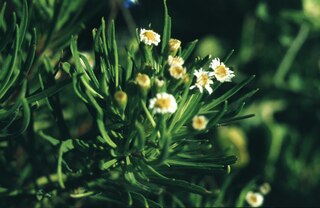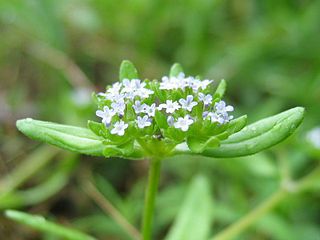
The little swift, is a small species of swift found in Africa and southwestern Asia, and are vagrants and local breeders in southern Europe. They are found both in urban areas and at rocky cliffs where they build nests in a way typical of all members of the order Apodiformes. The genus name Apus is Latin for a swift, thought by the ancients to be a type of swallow without feet. The Latin specific affinis means similar to or related to, but in this case the species that the little swift supposedly resembles is not clear from the description. A population formerly considered to be an eastern subspecies of little swift is now separated as a distinct species, the house swift.

Jerdon's bush lark or Jerdon's lark is a species of lark in the family Alaudidae found in south Asia. This was formerly considered as a subspecies of Mirafra assamica and termed as the Madras bushlark. Two other species in the complex include Mirafra marionae and Mirafra microptera. Jerdon's bush lark is typically very pale on the underside

The savanna nightjar, sometimes also allied nightjar or Franklin's nightjar, is a species of nightjar found in South and Southeast Asia. Six subspecies are recognised: C. a. monticolus, C. a. amoyensis, C. a. stictomus, C. a. affinis, C. a. timorensis and C. a. propinquus. It was once considered conspecific with the chirruping nightjar. The IUCN Red List has assessed the species to be of least concern because it has a large range and its population trend is stable.
The golden otocinclus is one of the smallest known suckermouth catfish, often called a 'dwarf oto'. Endemic to Southeast Brazil, this herbivorous, rheophilic, bottom-feeder only grows to around 4 cm (1.6 in) in length. The close relatives of this small fish are often used for the purpose of controlling algae in small home aquariums, under the name Otocinclus affinis. In reality, they belong to the species O. vittatus, O. vestitus and O. macrospilus and O. huaorani. The real M. affinis is not present in the aquarium hobby.

The chocolate pipistrelle is a species of vesper bat in the family Vespertilionidae. It is found in China, India, Myanmar, Nepal, and Sri Lanka.

Akodon affinis, also known as the Colombian grass mouse or Cordillera Occidental akodont, is a species of rodent in the family Cricetidae. It is found only in the Cordillera Occidental of Colombia.

The white-spectacled warbler is a species of leaf warbler in the family Phylloscopidae. It is found in Asia from the eastern Himalayas to south-eastern China and southern Vietnam. Its natural habitats are subtropical or tropical moist lowland forests and subtropical or tropical moist montane forests. It was formerly included in the Old World warbler family, Sylviidae.

Scalesia affinis is a species of flowering plant in the family Asteraceae. It is endemic to the Galápagos Islands, Ecuador.

Tornier's frog is a species of frog in the subfamily Pelodryadinae. It is endemic to Australia.

The black-chested jay is a species of bird in the family Corvidae.

The black-headed honeyeater is a species of bird in the family Meliphagidae. It is one of two members of the genus Melithreptus endemic to Tasmania. Its natural habitats are temperate forest and Mediterranean-type shrubby vegetation. Despite its name, the black-headed honeyeater eats predominantly insects.

The long-tailed mole is a species of mole in the family Talpidae. It is found in China, Vietnam and Myanmar.

The intermediate horseshoe bat is a bat species of the family Rhinolophidae that is very widespread throughout much of the Indian subcontinent, southern and central China and Southeast Asia. It is listed by IUCN as Least Concern as it is considered common where it occurs, without any known major threats.

Valerianella is a genus of plant in family Caprifoliaceae. Many plants of this genus are known by the common name corn salad or cornsalad, although that name most often refers to Valerianella locusta.

Euthynnus affinis, the mackerel tuna, little tuna, wavyback skipjack tuna, kawakawa, or tongkol is a species of ray-finned bony fish in the family Scombridae, or mackerel family. It belongs to the tribe Thunnini, better known as the tunas. This is an Indo-Pacific species which is found from the Red Sea to French Polynesia.

The southern river terrapin is a turtle of the family Geoemydidae found in Malaysia, Indonesia and Cambodia.
Gonystylus affinis is a tree in the family Thymelaeaceae.

Blyth's paradise flycatcher, also called the oriental paradise flycatcher, is a species of bird in the family Monarchidae. It is native from southern China to Sumatra and Melanesia. Formerly, it was considered a subspecies of the Asian paradise flycatcher until elevated to species rank by the IOC in 2015.

Valerianella dentata is a species of flowering plant, belonging to the genus Valerianella.
This page is based on this
Wikipedia article Text is available under the
CC BY-SA 4.0 license; additional terms may apply.
Images, videos and audio are available under their respective licenses.

















